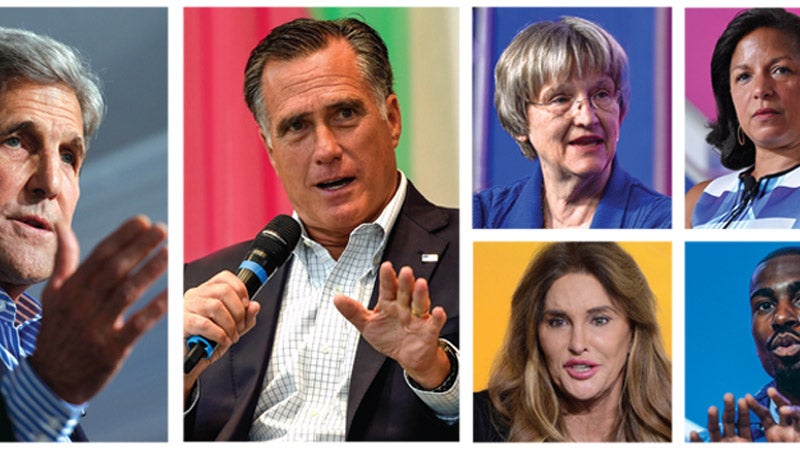In the midst of another election cycle, Americans find themselves also in the midst of a plethora of voting-rights issues. Some states—Oregon, California, and Washington—are experimenting with online registration and other devices to increase access to registration and voting. Other states—Texas, North Carolina, and Ohio, encouraged by Shelby County v. Holder, a 2013 split Supreme Court decision eviscerating the Voting Rights Act—have created new barriers to voting registration and ballot access. These new barriers have led in turn to a flurry of litigation raising constitutional challenges to the new stringent state voter-restriction laws.
As the nation heads into a presidential election, all this action highlighted the fundamental weakness of the Constitution: it does not adequately define or protect the right of every citizen to vote. And the right to vote is the underpinning of America’s identity as the world’s greatest representative democracy.
Amending the Constitution to enhance the right of citizens to vote has been a long-standing challenge. Importantly, it is a challenge the nation has repeatedly met. Despite the extreme difficulty of amending the Constitution, on no fewer than seven occasions amendments have been made to the original provisions governing the rights of citizens to vote. Those amendments have been necessary because although the Founding Fathers, as we refer to them, started the Constitution with the phrase “We the people,” they must have known it was a bit of a fiction. As Tonto, the fictional Native American sidekick, famously asked the Lone Ranger, the fictional cowboy, “What do you mean ‘we,’ white man?”
Reflecting 18th-century racism, sexism, and elitism, the Founding Fathers had a very narrow view of who should be the voters in their declared democracy. The original Constitution did not define voting eligibility. It was left to the 13 original states to decide who could vote. The states in turn created a very limited class of those eligible to vote: free men over the age of 21 who owned property. And since the Constitution limited the power of even those voters to directly elect only a very limited number of federal offices, that narrow white male propertied minority of the population could vote directly only to elect members of the House of Representatives. Senators were elected by state legislatures, and the president and vice president by an Electoral College whose members were elected by the legislatures of the states.
Not quite what we think of as democracy today!
Americans have had to travel a very long way toward having a government by “the consent of the governed,” as the Declaration of Independence promised, or to become Abraham Lincoln’s “government of the people, by the people, for the people.” Well over a century, in fact. The process of expanding the rights to vote began after the Gettysburg Address and the Civil War, and continued through those seven amendments to the Constitution. The amendments first enfranchised former slaves and threatened states with lesser representation if they deprived citizens of voting rights for reasons other than crimes. They then assured all citizens of equal protection of the laws—then women, then citizens over the age of 18. They then abolished the poll tax and provided for the direct election of senators.
Notably, and rather magnificently, every one of those seven constitutional expansions of the right to vote was approved by voters who thereby reduced their previous voting power—apparently for the sake of fulfilling all those wonderful promises of representative democracy in the Declaration of Independence, the Constitution’s preamble, and the Gettysburg Address.
Because, however, the severely constricted 18th-century attitudes toward equality that infected the promised democratic ideal were disinfected one narrowly focused amendment at a time, the US government has never gotten around to providing a singular robust affirmation of the basic right of citizens to vote. This, and the limiting and limited decisions of US courts—particularly the recent Shelby decision striking down the core of the Voting Rights Act—has enabled those who have been motivated by racist, partisan, or other reasons to persist in continuing to create obstacles to the most fundamental of the nation’s basic ideals: universal representative democracy.
National leaders know how to fix this problem. Arduous though the Constitution makes it, the solution is one more amendment to the Constitution addressing voting rights. The Constitution’s First Amendment—prohibiting any law restricting political rights of speech, assembly, press, and petition—established and provides the model. The courts read it clearly. To in any way inhibit those political rights, a law must pass “strict scrutiny.” For any infringement on those freedoms to pass muster, it must demonstrably be the least restrictive needed to achieve a necessary objective.
So should it be with the right to vote. After all, those First Amendment political rights of speech, assembly, press, and petition are as protected as they are precisely to make possible the meaningful exercise of voting rights—informed, intelligent, and free. A fortiori—from the greater, the lesser is known—as legal scholars note.
Here is a text that can achieve what’s needed:
“Neither the Congress nor any State shall deprive or inhibit the right of any native-born or naturalized adult Citizen to vote in any duly called election.”
What plausible reason, other than the complexity of the effort, can be offered in opposition to this proposal? It has been done before. America can and should do it again—finally.


